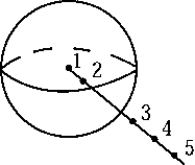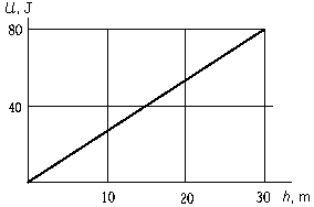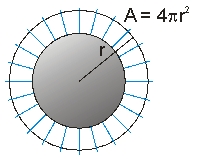Exam 11: Gravity
Exam 1: Systems of Measurement86 Questions
Exam 2: Motion in One Dimension103 Questions
Exam 3: Motion in Two and Three Dimensions67 Questions
Exam 4: Newtons Laws117 Questions
Exam 5: Applications of Newtons Laws75 Questions
Exam 6: Work and Energy71 Questions
Exam 7: Conservation of Energy73 Questions
Exam 8: Systems of Particles and Conservation of Linear Momentum107 Questions
Exam 9: Rotation119 Questions
Exam 10: Conservation of Angular Momentum67 Questions
Exam 11: Gravity90 Questions
Exam 12: Static Equilibrium and Elasticity65 Questions
Exam 13: Fluids91 Questions
Exam 14: Oscillations138 Questions
Exam 15: Wave Motion122 Questions
Exam 16: Superposition and Standing Waves125 Questions
Exam 17: Temperature and the Kinetic Theory of Gases85 Questions
Exam 18: Heat and the First Law of Thermodynamics114 Questions
Exam 19: The Second Law of Thermodynamics61 Questions
Exam 20: Thermal Properties and Processes54 Questions
Select questions type
If the mass of Earth is 6 1024 kg, the mass of the moon 7 1022 kg, the radius of the moon's orbit 4 108 m, and the value of the gravitational constant 6 10-11 N · m2/kg2, the force between Earth and the moon is approximately
Free
(Multiple Choice)
4.9/5  (34)
(34)
Correct Answer:
B
Use the following scenario to answer the next problem.
NASA's "Weightless Wonder" flights can simulate "zero-g" or some other extraterrestrial gravity by flying a C-9 jet plane in a parabolic path. One path the plane takes is expressed as y = yo + 0.8 x - 1.02 10-4 x2 where yo is the highest point, and x and y are the horizontal and vertical coordinates (in m).
-Suppose yo = 10000 m and the lowest height is 2000 m, how long is the flight with a simulated lunar gravity gMoon = 1.62 m/s2?
Free
(Multiple Choice)
4.7/5  (42)
(42)
Correct Answer:
A
Test masses are used to measure the gravitational field at various positions in and near a hollow spherical shell. The gravitational field will be smallest at point(s) 
Free
(Multiple Choice)
4.8/5  (36)
(36)
Correct Answer:
E
An object whose mass is 4 kg experiences a gravitational force of 20 N  at some point P. The gravitational field at this point is
at some point P. The gravitational field at this point is
(Multiple Choice)
4.9/5  (35)
(35)
The radius of the orbit of Earth around the Sun is 150 106 km. If the orbital periods for Earth and Venus are 365 and 225 days respectively, calculate the radius of orbit for Venus in astronomical units AU.
(Multiple Choice)
4.7/5  (42)
(42)
Earth and Mars are 1.0 AU and 1.52 AU away from the Sun, respectively. Given that the period of Earth's orbit around the Sun is 1 yr, calculate the period of the orbit of Mars around the Sun. (1 AU = 150 106 km)
(Multiple Choice)
4.7/5  (30)
(30)
In a distant galaxy, a planet orbits its sun at a distance of 1.8 1012 m with a period of 108s. A second planet orbits the same sun at a distance of 9 1011 m. What is the period of the second planet?
(Multiple Choice)
4.8/5  (25)
(25)
The Cavendish experiment has been described in elementary textbooks as "weighing the Earth." In fact, it was designed to measure the
(Multiple Choice)
4.9/5  (39)
(39)
When a falling meteor is at a distance of twice Earth's radius (re = 6.436 106 m) from the surface of Earth, its acceleration due to gravity is approximately
(Multiple Choice)
4.9/5  (33)
(33)
In the absence of air resistance, the least speed with which a body must be projected vertically upward from Earth's surface (me = 5.99 1024 kg,
Re = 6.37 106 m) if it is to reach an altitude of 800 km is
(Multiple Choice)
4.8/5  (40)
(40)
The acceleration due to gravity at the surface of Earth is g. The radius of Earth is RE. The distance from the center of Earth to a point where the acceleration due to gravity is g/9 is
(Multiple Choice)
4.7/5  (41)
(41)
A certain object weighs 22.2 N on the surface of Earth. If the radius of the moon is 0.276 times the radius of Earth and the mass of the moon is 0.0123 times the mass of Earth, the object's weight on the surface of the moon is approximately
(Multiple Choice)
4.9/5  (38)
(38)
A planet is made of two distinct materials in two layers. From the core to R/2, the density of the material is 4000 kg/m3, and from R/2 to R the density is 3000 kg/m3. What is the mass of the planet if R = 5000 km?
(Multiple Choice)
4.8/5  (41)
(41)
A plot of the gravitational potential energy of a 1-kg body as a function of its height above the surface of a planet shows that the gravitational acceleration at the surface of the planet is 
(Multiple Choice)
4.8/5  (31)
(31)
 The magnitude of the gravitational field at point P, due to the body of mass m, is (G = 6.67 10-11 N·m2/kg2)
The magnitude of the gravitational field at point P, due to the body of mass m, is (G = 6.67 10-11 N·m2/kg2)
(Multiple Choice)
4.8/5  (31)
(31)
If the mass of a planet is doubled while its radius and the radius of orbit of its moon remain constant, the speed of the moon is
(Multiple Choice)
4.7/5  (23)
(23)
If the mass of a satellite is doubled while the radius of its orbit remains constant, the speed of the satellite is
(Multiple Choice)
4.8/5  (33)
(33)
A rocket is launched straight up from the surface of Earth with a speed v, such that the rocket reaches a maximum height of RE above the surface. Find the launch speed of the rocket. Neglect air resistance. (RE = 6.38 106 m, ME = 5.98 1024 kg, G = 6.67 10-11 N·m2/kg2)
(Multiple Choice)
4.9/5  (33)
(33)
NASA trains astronauts in "zero-g" by flying a C-9 jet plane in a parabolic path, the so called "Weightless Wonder" or the "Vomit Comet" flights. One path the plane takes is expressed as y = yo + 0.8 x - 2.18 10-4 x2 where yo is the highest point, and x and y are the horizontal and vertical coordinates (in m). What is the horizontal speed of the plane?
(Multiple Choice)
4.7/5  (32)
(32)
Earth's gravitational field is given by  . The total flux (field times area) for a spherical surface area A that encloses all the field lines is
. The total flux (field times area) for a spherical surface area A that encloses all the field lines is 
(Multiple Choice)
4.8/5  (31)
(31)
Showing 1 - 20 of 90
Filters
- Essay(0)
- Multiple Choice(0)
- Short Answer(0)
- True False(0)
- Matching(0)